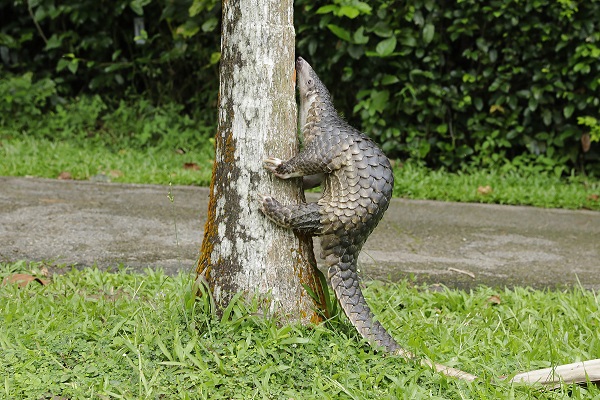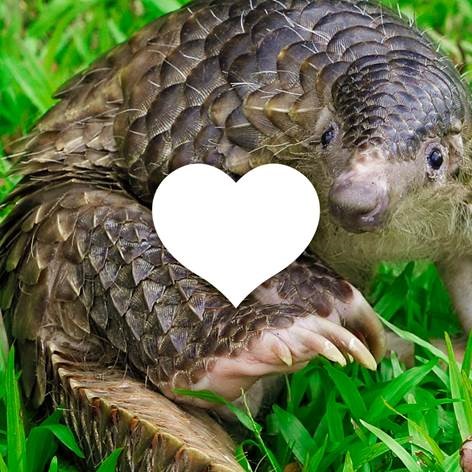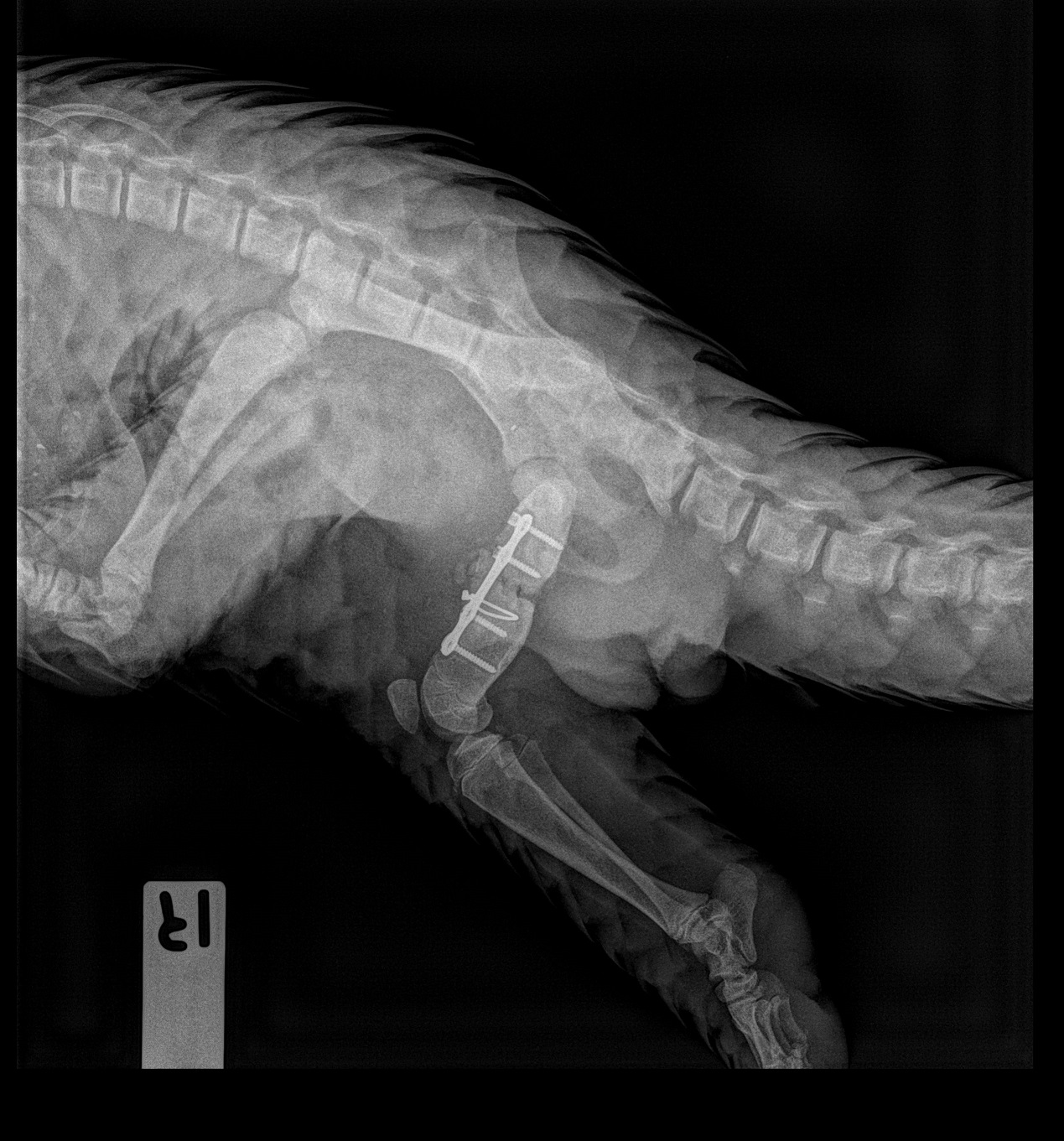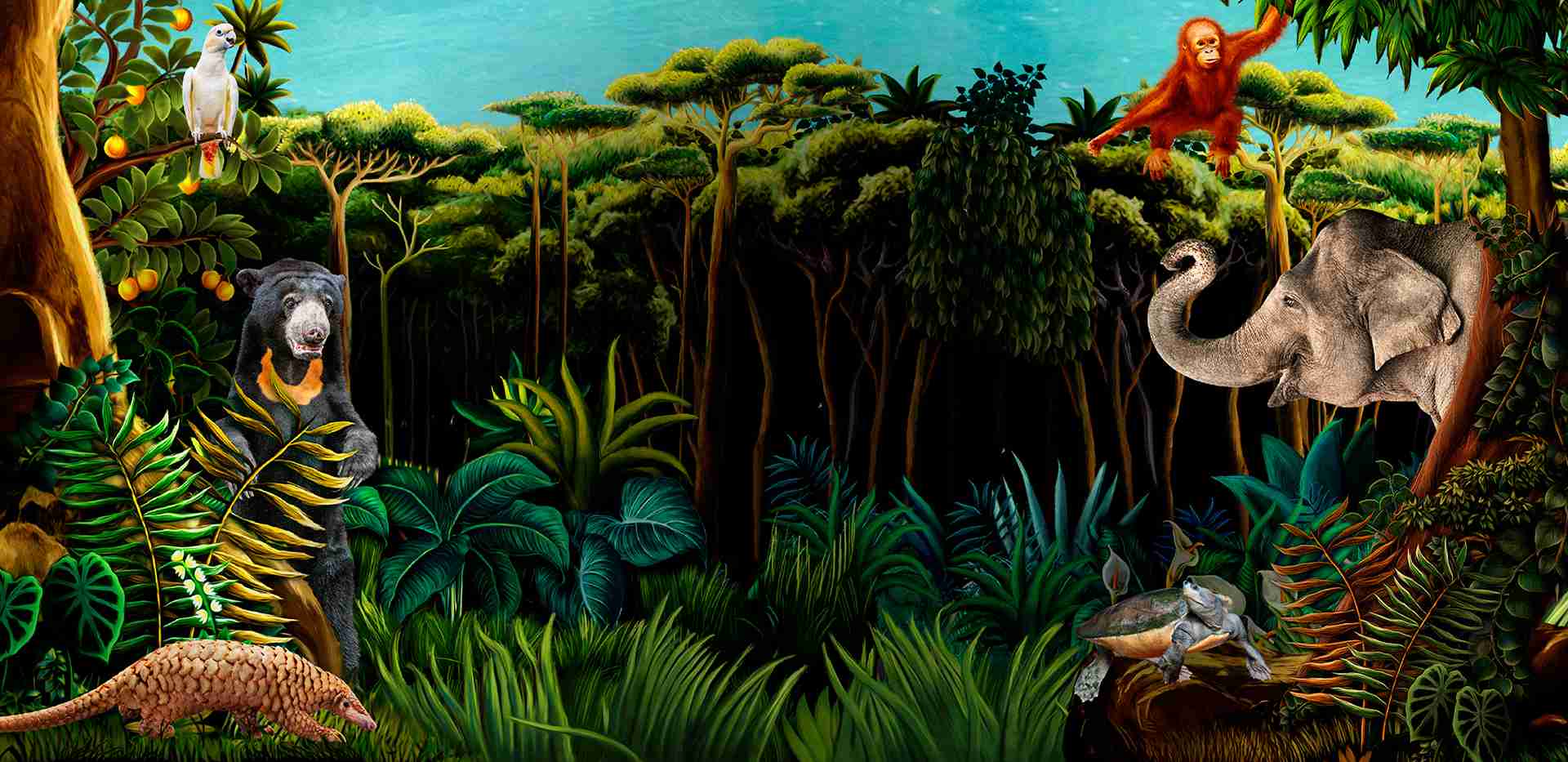WRS performs world's first orthopaedic surgery on Sunda pangolin, 'Berani' inspires theme of Together For Wildlife 2019
02 MAR 2019
Berani the rescued Sunda pangolin trying his limbs at climbing a tree and bravely exploring the undergrowth during one of his regular walks. The critically endangered mammal is believed to be the world’s first pangolin to receive orthopaedic surgery for a fractured right femur. Such walks aid in stregthening his muscles and allow the vet care team to monitor his progress at the same time.
PHOTO CREDITS: WILDLIFE RESERVES SINGAPORE

Berani the rescued Sunda pangolin trying his limbs at climbing a tree and bravely exploring the undergrowth during one of his regular walks. The critically endangered mammal is believed to be the world’s first pangolin to receive orthopaedic surgery for a fractured right femur. Such walks aid in stregthening his muscles and allow the vet care team to monitor his progress at the same time.
PHOTO CREDITS: WILDLIFE RESERVES SINGAPORE
Little is known of the elusive Sunda pangolin—so much so that when the fifteenth of 30 pangolin rescues in 2018 arrived with a fractured right hind leg last July, the odds of its survival were stacked against it as there was no previous surgical reference case for the species. Being globally critically endangered, the life of each pangolin that can be saved is significant.
Armed with 10 years of experience in treating and caring for more than 120 injured and rescued Sunda pangolins in Singapore, the WRS veterinary team, together with Honorary Consultant Dr Hsu Li Chieh from The Animal Clinic, pressed ahead to perform the world’s first known orthopaedic operation on a Sunda pangolin. Given the huge challenge ahead, the team named it ‘Berani’, Malay for courage, for he would need generous lashings of it to survive the journey to recovery.
For a start, anesthesia is challenging due to Berani’s size and the species’ peculiar anatomy (narrow oral opening coupled with long muscular tongue) making intubation near impossible. This made the long procedure to repair the fracture riskier. WRS vet team’s years of experience in treating this species became invaluable to even out the anesthetic risk.
Secondly, pangolin surgery is tricky because of their unique scale-covered body. This, coupled with short, chunky muscular legs made implant choice and access to the fracture site difficult. To get around the problem, the team had to operate from the inner thigh. Pangolins have a soft underbelly devoid of scales which makes it easier for the surgeon’s scalpel to navigate.
The first fracture repair surgery took place on 14 July 2018 but had to be followed up with a second operation on 28 July 2018. Checks after the first attempt revealed an implant failure, and this had to be replaced by a sturdier one to keep the bones in better alignment. Since then, Berani has been making good progress. The surgical site has completely healed, implants are stable, and bone healing is continuing at a steady rate. The vet care team currently takes him out for regular walks to strengthen his muscles and monitor his progress.
“Rehabilitation is often a long process which requires patience and perseverance. We want to make sure he achieves good return-to function before he can be considered for release. Regular walks allow us to observe his ability to move, dig, climb, obtain food, and escape from predators—skills which are necessary if he is to survive and thrive in the wild. Berani, living up to its name, is quite the fighter, and we are optimistic that with continuing care and rehabilitation from the team, the chance to return him to the wild is good,” said Dr Charlene Yeong, Manager, Conservation & Wildlife Health, and one of Berani’s primary veterinarians
“Not only are Sunda pangolins critically endangered, they are a cherished part of Singapore’s natural heritage. Berani’s resilience in recovery is an inspiration to us and reminds us that every pangolin we are able to save adds to the treasure trove in our backyard, and spells hope for the future of this truly unique native species,” continued Dr Yeong.
WRS’ efforts in saving pangolins
Pangolins are special to Wildlife Reserves Singapore (WRS). Night Safari is the world’s first zoo to exhibit this critically endangered species and the first to breed the species under human care. Since then, the collection has grown to eight pangolins and three babies have been born as part of a conservation breeding programme.
In the last decade, WRS has rehabilitated over 120 Sunda pangolins rescued from all over Singapore, including high profile cases like Sandshrew and Pangolina. The organisation funds several pangolin conservation projects, and in September last year, together with the National Parks Board and other stakeholders in the Sunda Pangolin Working Group, launched the Sunda Pangolin National Conservation Strategy and Action Plan.
In conjunction with World Wildlife Day on 3 March 2019, WRS is embarking on the Together for Wildlife campaign for the second year running. This year, the focus is on pangolins in a bid to build awareness for this little-known species native to Singapore. Members of the public can learn more about pangolins through interactive game stations, interaction with keepers, and up-close encounters with the scaly mammal.
Dr Cheng Wen-Haur, Deputy Chief Executive Officer and Chief Life Sciences Officer, Wildlife Reserves Singapore, said, “Along with seven other pangolin species in Asia and Africa, Sunda pangolins are the most heavily trafficked mammals in the world. Outside of Singapore these animals are collected at an unsustainable industrial level to meet East Asian demands for medicinal use. In Singapore, the main threats to their survival are habitat loss and motor vehicle accidents. On top of our rehabilitation efforts for injured and displaced pangolins in Singapore, we want to engage all Singaporeans to join us in our upcoming conservation campaign to make the pledge that our Sunda pangolin shall not go extinct on our watch.”
Throughout March, an online public awareness campaign, #TogetherforWildlife, will call on Singaporeans to join together to “scale up their love for pangolins” to spread awareness about their plight and contribute to saving them. Share the following image on Instagram and encourage two friends to join the movement. For every post with #TogetherforWildlife recorded in March 2019, WRS will pledge S$1 towards wildlife conservation*.

A series of in-park activities will run at Singapore Zoo and Night Safari throughout March in support of the Together for Wildlife conservation campaign. Learn more about the campaign at www.togetherforwildlife.sg
*Terms & conditions apply. To make the pledge count, Instagram account must be made public. Image can also be downloaded from www.togetherforwildlife.sg
Critically endangered Sunda pangolin Berani was rescued and sent to Wildlife Reserves Singapore’s Wildlife Heathcare and Research Centre in July 2018, where he was found to have a fractured right femur.
PHOTO CREDITS: WILDLIFE RESERVES SINGAPORE
Dr Charlene Yeong, Manager, Conservation & Wildlife Health, and Nor Sham Bin Ab Wahab, Senior Veterinary Nurse, prepare Berani for the world’s first orthopaedic surgery on a pangolin. The WRS vet team worked with Honorary Consultant Dr Hsu Li Chieh from The Animal Clinic.
PHOTO CREDITS: WILDLIFE RESERVES SINGAPORE
Pangolin surgery is tricky because of their unique anatomy. The presence of scales coupled with short, chunky muscular legs made implant choice and access to the fracture site difficult. To get around the problem, the team had to operate from the inner thigh. Pangolins have a soft underbelly void of scales which makes it easier for the surgeon’s scalpel to navigate.
PHOTO CREDITS: WILDLIFE RESERVES SINGAPORE
Dr Charlene Yeong, Manager, Conservation & Wildlife Health, examines an X-ray of Berani’s right femur, and concludes that the implants are stable and bone healing has been recorded.
PHOTO CREDITS: WILDLIFE RESERVES SINGAPORE

Close-up of Berani’s X-ray taken on 28 Jan 2019 showing that the implants are in place and that bone healing has been recorded.
PHOTO CREDITS: WILDLIFE RESERVES SINGAPORE

Close-up of Berani’s X-ray taken on 28 Jan 2019 showing that the implants are in place and that bone healing has been recorded.
PHOTO CREDITS: WILDLIFE RESERVES SINGAPORE
APPENDIX A | TOGETHER FOR WILDLIFE
Together for Wildlife is a conservation campaign by Wildlife Reserves Singapore (WRS), first launched in 2018 in conjunction with World Wildlife Day (3 March). The campaign calls on communities, businesses and individuals to come together to protect the future of wildlife and biodiversity through greater awareness and conservation action, in Singapore and around the world.
WRS, the group managing Jurong Bird Park, Night Safari, River Safari, and Singapore Zoo, is contributing to the conservation of wildlife and biodiversity by providing in-kind and financial support to a large variety of conservation efforts locally and internationally. With a focus on critically endangered Southeast Asian species, WRS supports and engages in over 30 conservation partnerships in this region and is particularly committed to helping develop integrated conservation action plans for species on the brink of extinction.
Together for Wildlife has two major elements: (1) public awareness and education, and (2) financial support by WRS.
(1) Achieving impact will require a coordinated effort by diverse stakeholders that is galvanised by an understanding of the current situation. By highlighting the various threats impacting wildlife to the public, WRS hopes to build greater awareness and understanding of the conservation issues faced which will inspire members of the public (from individuals to wider community groups and businesses) to take action and help protect all species from extinction.
(2) WRS is also committing to contribute S$1 for every public post (or pledge) on social media using the hashtag #TogetherforWildlife. As more people acknowledge the problem and commit to taking action, more funds to save species are raised!
APPENDIX B | WRS’ PANGOLIN CONSERVATION EFFORTS IN SINGAPORE
World’s first Sunda pangolin exhibit
In 2009, Night Safari became the world’s first zoological institution to exhibit the Sunda pangolin. Up until then, little was known about this enigmatic native species which is notoriously difficult to keep under human care. Since then, our collection has grown to eight pangolins and we have welcomed three babies as part of our conservation breeding programme.
Funding pangolin research
WRS also supports a myriad of local pangolin conservation projects, which are funded by the WRS Conservation Fund (WRSCF). These studies include:
o Faecal analyses to establish the diet and microbial community in the gut of pangolins
o The genetic make-up of the pangolins in Singapore
o Movement and behaviour studies after pangolins have been rescued and released back into the wild
Key player in National Conservation Strategy and Action Plan
WRS has taken a lead in hosting several workshops and conferences, inviting representatives from government agencies, NGOs and the conservation community to discuss and devise strategic and integrated conservation plans to save the pangolin.
In 2017, 50 conservationists, including some international experts, convened at Singapore Zoo for the Sunda Pangolin National Conservation Planning Workshop – Scaling Up Pangolin Conservation in Singapore, to consider the status of the pangolin in Singapore and discuss the way forward for its conservation in the long-term.
Looking ahead towards the next 50 years, the gathering led to a vision and aspirational document which was launched last September—the National Conservation Strategy and Action Plan for Sunda Pangolins in Singapore—to be implemented by the Singapore Pangolin Working Group, which consists of government agencies, non-governmental organisations, tertiary institutions and other individuals.
This effort was led by Wildlife Reserves Singapore (WRS) and the National Parks Board (NParks), with support from the IUCN SSC Pangolin Specialist Group, IUCN SSC Asian Species Action Partnership, and IUCN SSC Conservation Planning Specialist Group.
PANGOLIN CASE STUDIES
Sandshrew
Too young to be released after being rescued from a construction site at Upper Thomson, Sandshrew was hand-reared by our vets and keepers. Sandshrew was brought out on regular walks to hone his survival skills like climbing and digging for ants. He became the first baby pangolin to be hand-raised and reintroduced in the wild, thanks to NParks’ support.
Pangolina
Pangolina was brought to our parks after being injured in a road accident. She survived but her spine sustained permanent damage and she would not survive in the wild. Pangolina remains in our care at Night Safari and is brought on daily walks to strengthen her leg muscles.
APPENDIX C | TOGETHER FOR WILDLIFE ACTIVITIES
Throughout March, an online public awareness campaign, #TogetherForWildlife, will call on Singaporeans to join together to “scale up their love for pangolins” to spread awareness about their plight and contribute to saving them. Share the following image on Instagram and encourage two of your friends to join the movement. For every post with #TogetherForWildlife recorded in March 2019, WRS will pledge S$1 towards wildlife conservation*.
*Terms & conditions apply. To make the pledge count, Instagram account must be made public. Image can also be downloaded from www.togetherforwildlife.sg
A series of in-park activities will run at Singapore Zoo and Night Safari throughout March in support of the Together for Wildlife conservation campaign. Learn more about the campaign at www.togetherforwildlife.sg
Activity |
Details |
Saving Pangolins Game Stations
Ever wondered how we care for rescued pangolins? Step into the shoes of our care team and experience it yourself! Earn yourself an exclusive pangolin pin after completing all the stations*.
*Limited quantity, first-come first-served basis |
Date: 2 Mar – 31 Mar (Weekends only) Time: 10am – 4pm Venue: Singapore Zoo’s Frozen Tundra |
Make a Stand, Pledge for Pangolins!
Pledge to protect pangolins at our pledge wall by writing down one thing you want to do for pangolins.
WRS will pledge S$1 towards wildlife conservation with every pledge. |
Date: 2 Mar – 31 Mar Time: 8.30am – 6.00pm Venue: Singapore Zoo’s Frozen Tundra |
Story of Sandshrew the Pangolin
Go on a story walk to read the heart-warming story of Sandshrew, the first displaced pangolin to be hand-reared and released into the wild.
|
Date: 2 Mar – 31 Mar Time: 8.30am – 6.00pm Venue: Singapore Zoo’s Rainforest Walk |
Meet a Pangolin *Pre-registration Required
Get ready to fall in love with our shy and adorable pangolins when you meet them up close! Limited slots only, don’t miss out!
|
Dates: 9, 16, 23 & 30 Mar Time: 4.30pm Meeting Point: Singapore Zoo’s Wildlife Learning Centre
|
Pangolin Keeper Interaction Sessions
Be acquainted with both our pangolins and their trusty keepers! Interact with the keepers, ask them questions and get to know our resident pangolins better.
|
Date: 2 Mar – 31 Mar Time: 8.30pm Venue: Night Safari Fishing Cat Trail (Pangolin Exhibit)
|
What We Are Doing for Pangolins
Wildlife Reserves Singapore saves injured and displaced pangolins and releases them back into the wild. Learn how we can play a part in protecting this critically endangered species and what you can do to help them!
|
Singapore Zoo Date: 2 Mar – 31 Mar Time: 8.30am – 6.00pm Venue: Frozen Tundra
Night Safari Date: 2 Mar – 31 Mar Time: 7.15pm – 12.00am Venue: Entrance Courtyard outside Retail Shop |

